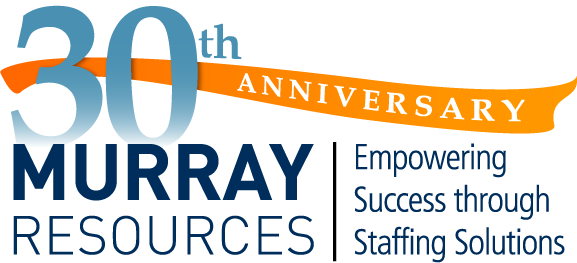Keeping a “Done List”: The Secret to Career Confidence
July 1, 2025

In a fast-paced work culture, we can be found constantly chasing the next deadline, the next task, or the next achievement. But in all that hustle, it’s easy to lose sight of the wins you’ve already earned. That’s why more job seekers and professionals are embracing a surprisingly simple – but incredibly powerful – tool to stay grounded, boost confidence, and build job-winning resumes: the done list.
A done list isn’t just a log of tasks. It’s a real-time record of your accomplishments, strengths, and relevant skills – helping you better align your work with your goals, job title, and the kind of career trajectory you want to build. Whether you’re staying put or considering your next move, this small habit can lead to big results.
Let’s take a look into how this strategy can help you grow your career, build a job-winning resume, and confidently speak to your value in any job description.
Key Takeaways
- Track Your Accomplishments – Capture the technical skills, soft skills, and major milestones that reflect your value.
- Be Review-Ready – Use your done list to prepare for performance reviews, promotions, and raises.
- Stand Out to Recruiters – When updating your resume or applying for roles, your done list helps highlight the most relevant skills for the job.
- Boost Your Career Confidence – Reflecting on your progress can be a game-changer for morale, motivation, and interviews.
What is a “Done List”? And Why Should Job Seekers (and Motivated Professionals) Keep Them?

The “Done List”: a simple, ongoing record of the tasks, projects, and accomplishments you complete at work.
A done list should not be confused with a to-do list – think of this as a what’s been done list. From technical tasks and core competencies like coding or data analysis to strategic wins like closing a sale or presenting to leadership, everything goes on the list.
It doesn’t have to be fancy. You can use a notebook, a Google Doc, a spreadsheet, or a note-taking app – whatever format makes it easy to maintain for you. The goal is just to create a clear picture of your value, productivity, and progress over time.
Let’s explore why the most successful professionals keep a “done list”:
🌟 Easily Track Your Progress Over Time
When you’re heads down working, it’s easy to forget just how much you’re accomplishing. A done list helps you visualize your output – and proves that you’re moving forward, even when progress feels slow.
🔹 Example: A content strategist might log, “Published 4 blogs optimized for SEO, increased organic traffic by 20% in Q1.” This provides measurable proof of impact.
Over time, you’ll build a portfolio of achievements aligned with your job title and evolving skill set – perfect for those mid-year reflections or annual reviews.
🌟 Simplifies Performance Review Prep
Trying to recall everything you’ve done over the last six months is tough – especially when you’re juggling multiple priorities. With a done list, you’ll have a detailed breakdown of what you’ve accomplished and how it aligns with your role’s job description.
You should be able to easily reference the following in your list:
- Quantifiable results
- Relevant experience
- New technical skills you’ve gained
- Key components of your job and projects completed
- Team contributions and leadership moments
And if you’re on the cusp of asking for a raise or title change, you’ll have hard proof that you’ve earned it!
💬 Tip: To best stay on top of your list, we recommend labelling each week, month, or business quarter in your list so you can quickly scan your progress over time.
🌟 Helpful in Building a Job-Winning Resume
One of the most powerful benefits of a done list? It makes resume writing (and rewriting) so much easier.
Instead of scrambling to remember details, you’ll have items like the following on the ready:
- Bullet points that reflect measurable success.
- Examples tailored to the job title you’re applying for.
- Keywords that match job descriptions.
- A well-rounded view of your relevant skills – both technical and interpersonal.
You’ll also naturally gather the kind of language and action verbs that recruiters and hiring managers love to see. Over time, your done list becomes a launchpad for a job-winning resume – one that evolves with you.
🔹Example: If a job description calls for “project coordination” and “cross-functional collaboration,” your done list might include, “Led weekly meetings between design, dev, and marketing teams to launch new product line on time and under budget.”
🌟 Boosts Your Career Confidence
Confidence doesn’t always come naturally at work – especially during stressful seasons, new roles, or career changes. A done list serves as proof of what you’re capable of.
Whether you review your list weekly, monthly, or quarterly, a done list can:
- Give you a morale boost when you’re feeling overwhelmed or uncertain.
- Reinforce your value when you’re facing challenging feedback.
- Help you advocate for yourself in conversations with managers or recruiters.
- And if you’re preparing to leave your current role, your done list can serve as a valuable tool in Resigning the Right Way: How to Leave a Job on a Positive Note – helping you clearly communicate your contributions and leave a lasting, professional impression.
🌟 Helps You Shine in Job Interviews
Interview prep becomes much less stressful when you’ve already documented your experience and skills.
When preparing for a job interview, your done list can help provide:
- Specific stories of how you added value.
- Clear evidence of how your technical skills and accomplishments align with the new job description.
- Fresh, detailed examples tailored to the role you want.
💬Tip: These lists can also make it easier to quantify your work during an interview – something many job seekers struggle with. When you can talk about growth, savings, process improvements, or engagement metrics, your answers will stand out.
🌟 BONUS: Your Done List Can Help You Align Your Experience With Job Descriptions
Looking to move into a new role or industry? Your done list can double as a career compass. You can then shape your done list in real-time to reflect the direction you want to grow. It becomes not just a log – but a map for your future.
As you review open roles or future job descriptions, start identifying patterns:
- What keywords keep showing up?
- What skills are in high demand for your ideal job title?
- Are there gaps in your experience that you could fill with side projects, certifications, or stretch tasks?
🔹 Example: If every job description you’re eyeing lists “CRM experience” as a requirement, start logging every Salesforce or HubSpot task you complete – and build your narrative from there.
How to Build (and Keep) an Effective Done List

On board with creating a done list, but you’re not sure where to start? Add anything that aligns with your job description, showcases your relevant skills, or highlights measurable impact. If it reflects your value – it belongs on the list.
Here are some examples of what to include on your done list:
- Major projects launched or completed.
- Technical skills learned (new software, platforms, tools).
- Presentations or reports delivered.
- Revenue or cost savings generated.
- Teamwork or leadership contributions.
- Training programs or relevant coursework completed.
- Process improvements.
- Feedback received from managers or clients.
Now that you know why a done list is such a powerful tool, and what to include on it, let’s talk about how to maintain one effectively. The key is finding a system that works for you and sticking with it consistently. Whether you prefer digital tools or pen and paper, the most important thing is to make it easy, accessible, and sustainable – so it becomes a habit, not a hassle. Here’s how to get started:
📌 Choose a Format That Works Best for You
Digital or analog – it doesn’t matter, as long as it’s convenient for you.
Here are a few formats to consider for building your list:
- Google Docs or Microsoft Word.
- Spreadsheets with columns like “Date,” “Task,” “Impact,” and “Skills Used”.
- Apps like Notion or Evernote.
- A paper journal you update weekly.
💬 Tip: As best practice, we recommend keeping a version on your personal device or cloud so you’ll always have access. This will ensure that even in the case of technical issues, or having to leave a job suddenly, you’ll have all of your information.
📌 Be Consistent With Logging Your Information
Consistency is the key to building a done list that works. Set a recurring time on your calendar for even a few minutes each week can result in a powerful portfolio of career wins.
- Daily: 5-minute end-of-day reflection.
- Weekly: Friday recap or Monday planning session.
- Monthly: Summary of top 5 accomplishments.
📌 Include the Right Level of Detail in Your Notes
The key to making your done list useful in the long run is capturing just enough detail to jog your memory and clearly reflect your impact. You don’t need to write paragraphs – but your notes should provide enough context so you can reference them later for resumes, interviews, or performance reviews.
When logging an entry in your done list, consider including details like:
- Date completed.
- Task or project name.
- Summary of work.
- Tools, platforms, and skills used.
- Outcome and relevant, tangible results.
🔹Example: “April 2: Designed, automated, and launched internal project dashboard for reporting team using Asana. Reduced report turnaround time by 60%.”
📌 Review, Reflect, and Repurpose Your Done List Content
By reflecting on what you’ve accomplished, you can make more informed decisions about your goals, career direction, and even the types of opportunities you want to pursue next.
Your done list content can also be a goldmine when you’re doing things like:
- Updating your LinkedIn profile.
- Writing cover letters.
- Creating a personal website or portfolio.
- Speaking with recruiters.
- Preparing for promotions or job changes.
Summary
Keeping a done list might seem like a small habit, but its impact can be huge. By consistently logging your accomplishments – big and small – you create a powerful tool that can boost your confidence, support your growth, and open new doors in your career. Whether you’re preparing for a performance review, updating your job-winning resume, or interviewing for a new job title, a done list gives you specific, tangible proof of your value.
It helps job seekers align with job descriptions, showcase relevant skills, and track technical or soft skill development over time. It also gives you the language, metrics, and mindset needed to advocate for yourself at every stage of your professional journey.
In short: A done list helps you stay motivated, articulate your worth, and confidently take control of your career.
Q&A

Q: Should I include soft skills or just technical tasks?
A: Include both! Document how you’ve demonstrated leadership, communication, teamwork, and problem-solving, alongside your technical skills. These are key traits that show up in nearly every job description.
Q: Can a done list help with a career change?
A: Definitely. Your done list will help you identify transferable skills and reshape your resume toward a new job title or industry, even if your experience isn’t a direct match.
Q: What if my job feels repetitive – what can I log?
A: Even if your role is consistent, there are always nuances. Log performance improvements, speed or quality boosts, new tools used, or client feedback received. Over time, small improvements show up as patterns of excellence.
Q: Should I include personal development or learning?
A: Yes! If you took a course, read industry books, attended webinars, or practiced new skills on your own time, include it. That initiative matters to future employers.
Q: How do I start if I’ve never kept one?
A: Begin by reflecting on the last week or month. Write down anything you remember completing or contributing to. Then build from there. It’s okay to start small!
Work with the Top Recruiting Firm in the U.S.
If you’re searching for a new job and are interested in working with a recruiter, turn to Murray Resources. We can help you navigate your way through your search, so you land a job you love. Take a look at our current job openings or contact us today to get started. Your next opportunity is out there, and we’re here to help you find it.
